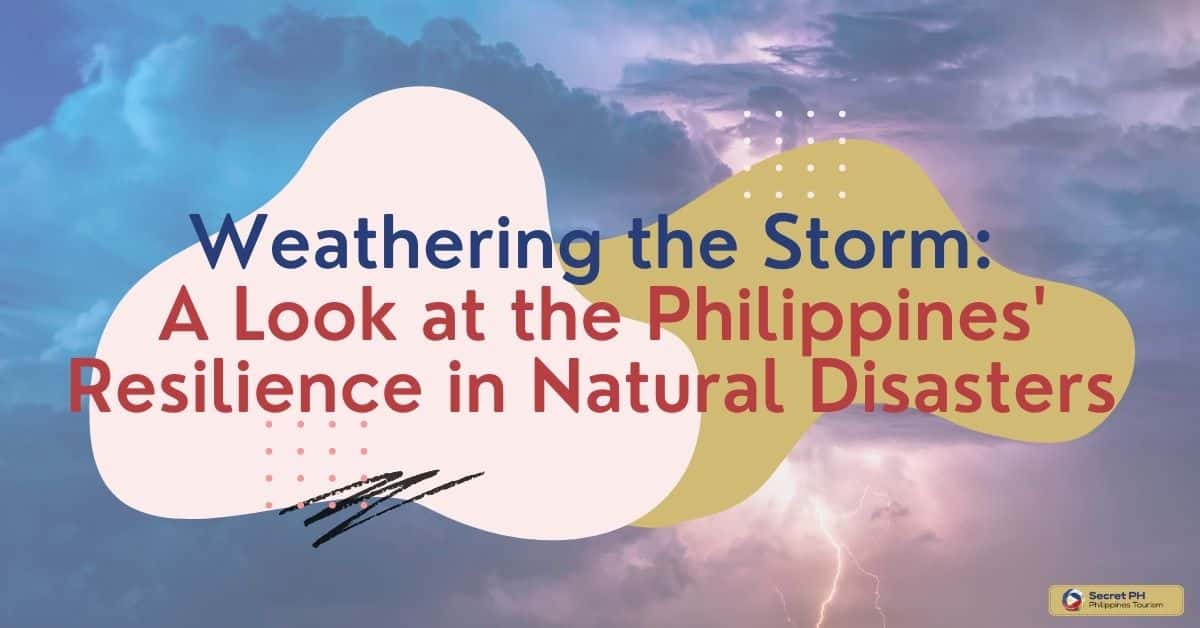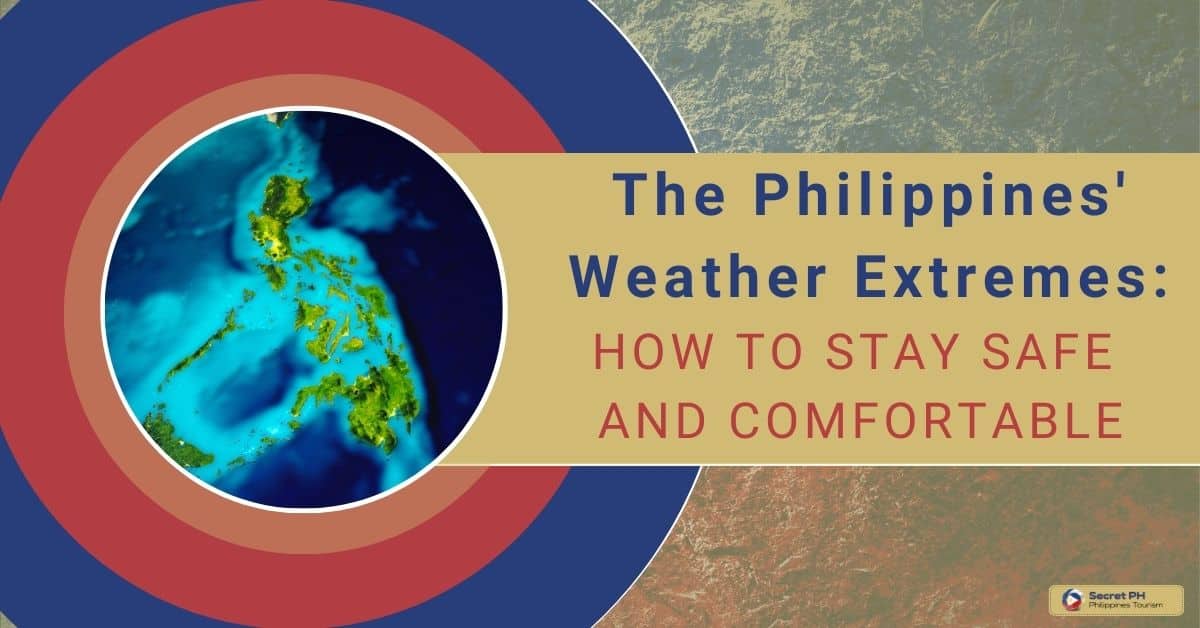The Philippines is a tropical country with a wide variety of climates to explore. The weather plays an important role in the day-to-day lives of its inhabitants, so it’s essential to plan your trip accordingly. Depending on where you’re visiting and when, you can expect different temperatures, rainfall patterns, and other natural phenomena.
The Philippines has a tropical climate with two seasons: dry (Dec-May) and wet (Jun-Nov). The dry season has clear skies and warm temperatures, while the wet season brings heavy rain and typhoons. The transitional seasons (Nov-Feb, May-Jun) offer a mix of both. There are also regional variations. Planning accordingly is crucial.
This guide provides an overview of the weather patterns in different regions of the Philippines and advice on when to best visit. With some knowledge of what to expect, travelers can take full advantage of their time in this beautiful country!

The Climate of the Philippines
The Philippines is a tropical country located in Southeast Asia. Due to its geographic location and topography, the country experiences a unique tropical climate with varying temperature and precipitation patterns. In this article, we will explore the different subheadings of climate in the Philippines.
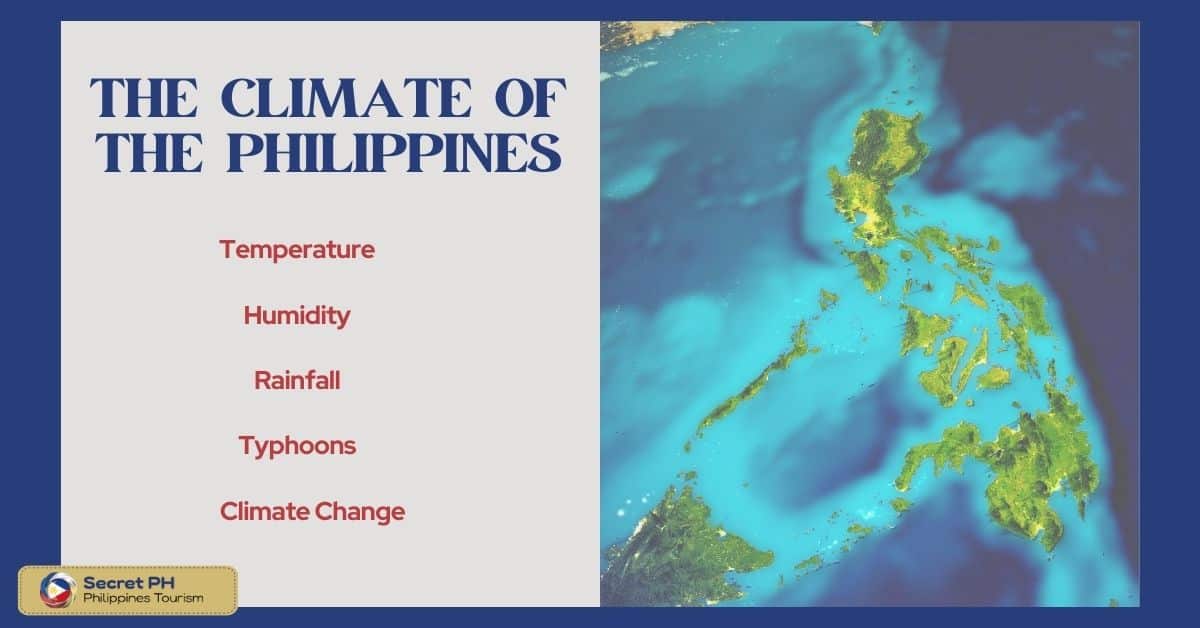
Temperature
The average temperature in the Philippines ranges from 25 to 32 degrees Celsius. However, the temperature can get as high as 38 degrees Celsius in the months of April and May during the summer season. The coolest temperature is usually recorded during the months of December and January, with an average of around 20 degrees Celsius in the highlands.
Humidity
The country experiences a very high level of humidity, especially during the rainy season from June to October. This is due to the country’s location near the equator and its surrounding bodies of water.
Rainfall
The Philippines has a rainy and dry season. The rainy season usually starts from June to October, characterized by heavy rains and occasional typhoons. The dry season, on the other hand, lasts from November to May with occasional showers. The average annual rainfall in the Philippines is around 2,400 millimeters, but some areas can receive as much as 4,500 millimeters in a year.
Typhoons
The Philippines is one of the most typhoon-prone countries in the world due to its location in the Pacific Ring of Fire. Typhoons usually occur during the rainy season and can cause severe damage and loss of life. On average, the country experiences at least 20 typhoons per year.
Climate Change
The Philippines is one of the countries most vulnerable to climate change. The increase in global temperature and sea level rise can lead to more intense and frequent typhoons, flooding, and other climate-related disasters. The government and various organizations in the country are taking steps to mitigate and adapt to the effects of climate change.
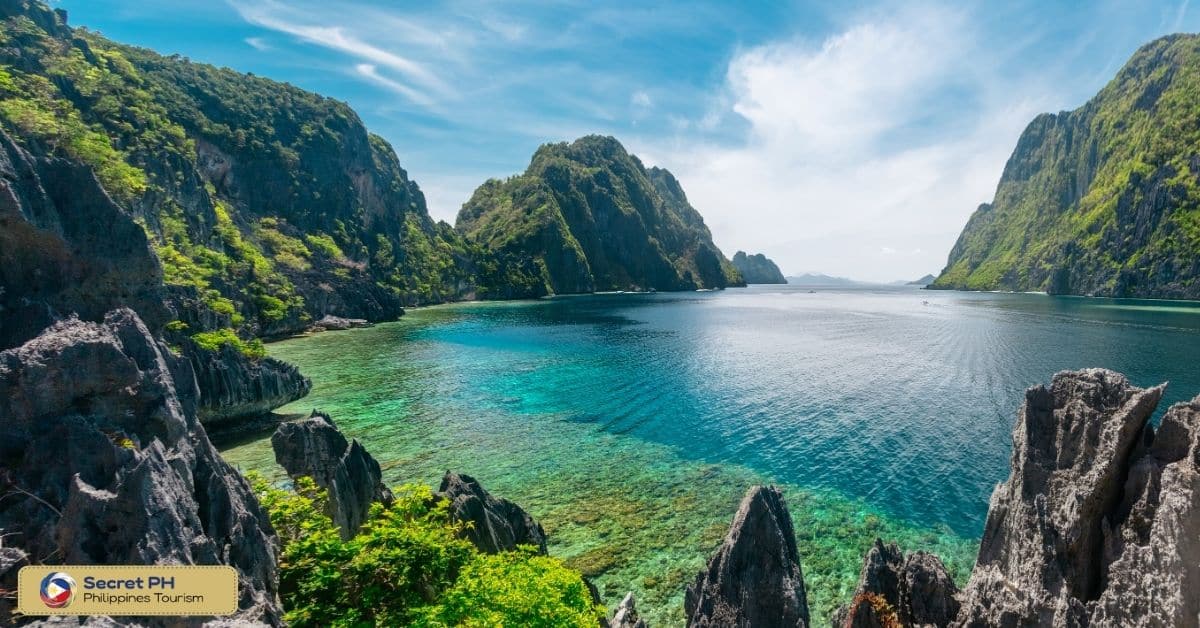
Weather in the Dry Season (December to May)
The dry season in the Philippines typically runs from December to May, and it is a time of year when the weather can be hot and dry. The Philippines is a tropical country, so temperatures rarely drop below the mid-20s Celsius, even at night.
During the dry season, temperatures can often reach 30°C or higher, with humidity levels making it feel even hotter. This can be tough for those not used to the heat, so it is important to stay hydrated and avoid being outside during the hottest parts of the day.
While rain is less common during the dry season, it can still occur, particularly in the early part of the season. However, when it does rain, it is typically short-lived and quickly followed by sunshine.
Despite the high temperatures, many people still enjoy the dry season, particularly for beach trips and water-based activities. With crystal-clear waters and some of the most beautiful beaches in the world, the Philippines is a popular destination for water sports such as snorkeling, diving, and surfing.
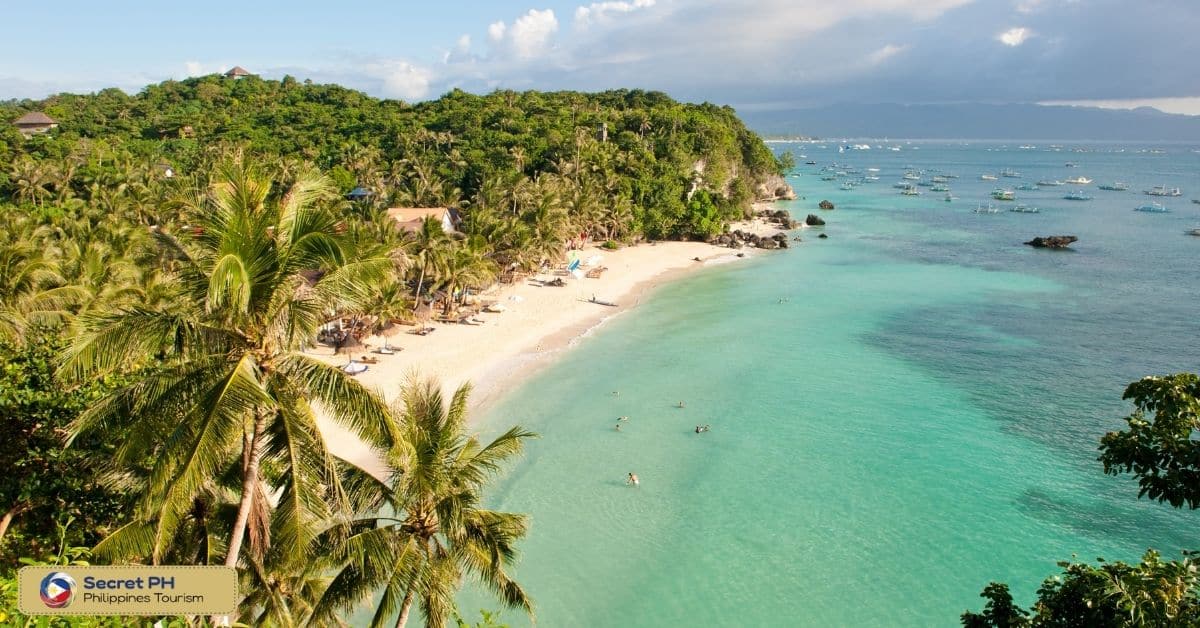
Weather in the Wet Season (June to November)
The wet season in the Philippines starts in June and lasts until November. During this time, the country experiences heavy rainfall and strong winds, affecting various areas around the country.
The weather during this period can be unpredictable, with thunderstorms and flooding occurring frequently in some areas. The Philippines is commonly hit by typhoons, which can cause significant damage to infrastructure and agriculture.
The wet season also brings cooler temperatures, making it a relief from the scorching heat of the summer season. However, travelers should be prepared for sudden and heavy downpours if planning a trip during this time.
Despite the challenges that come with the wet season, it does have some positive effects on the climate. The increased rainfall supports the agriculture industry, with rice paddies and other crops receiving significant amounts of water that help with their growth. The wet season also replenishes the country’s water supply in preparation for the dry season.
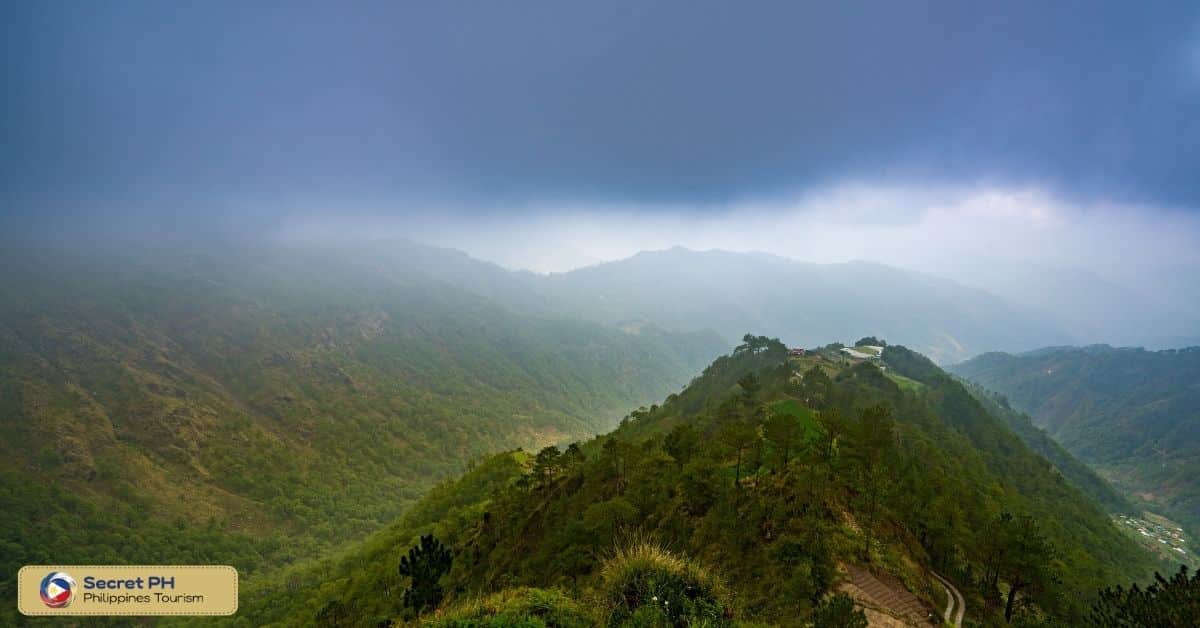
Weather in the Transitional Seasons (November to February and May to June)
The Philippines is a country situated in the Southeast Asia region that experiences a tropical climate throughout the year. However, during the transitional seasons, which occur from November to February and May to June, the weather in the Philippines varies significantly.
During the months of November to February, the country experiences cooler weather due to the Northeast Monsoon, which typically brings in cold and dry winds from the north. This period is also known as the “Amihan” season. Temperatures can drop as low as 20°C in some areas, especially in the northern and mountainous regions of the country.
On the other hand, the transitional season from May to June, known as the “Tag-init” or dry season, is characterized by warmer temperatures and less rainfall. The Philippines experiences the highest temperatures and humidity levels during this period. It’s a time when the country usually prepares for the incoming monsoon season that will bring rain for the rest of the year.
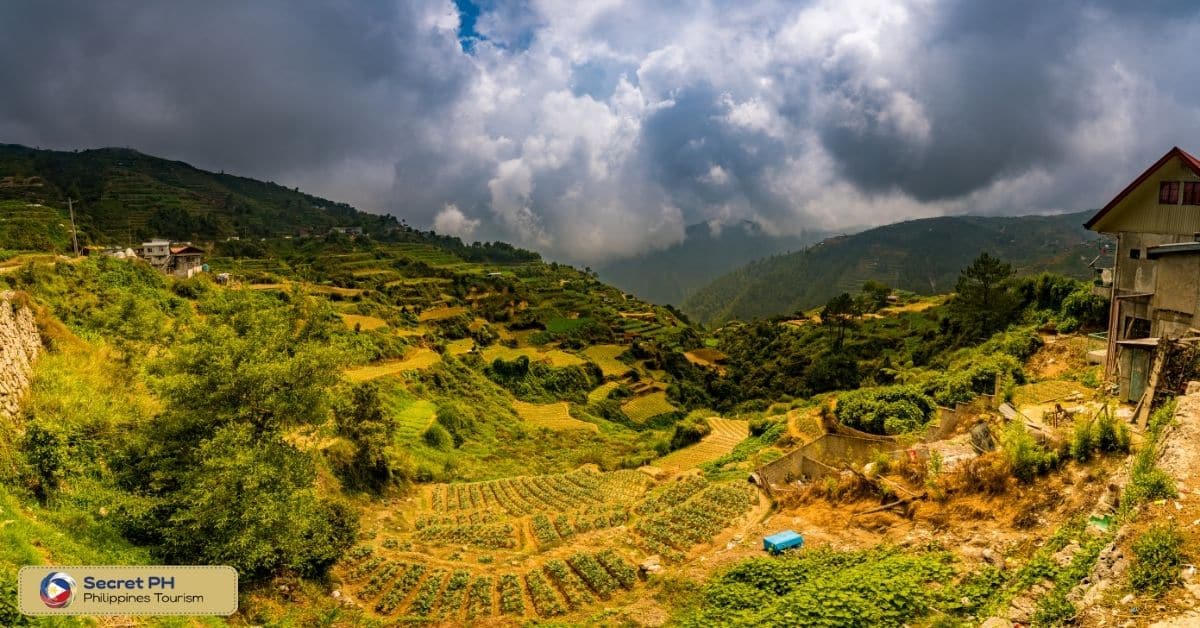
Regional Weather Variations
The Philippines is a large country with varying climates and weather patterns. Different regions experience different conditions depending on their geographic location, elevation, and local topography. This guide provides an overview of the regional variations in climate throughout the Philippines.
Northern Luzon
Northern Luzon is located close to Taiwan and experiences a tropical monsoon climate. The region is typically cooler and wetter than other parts of the country, with high levels of rainfall all year round. Temperatures average between 23°C and 30°C, but can drop to as low as 15°C in the mountainous areas.
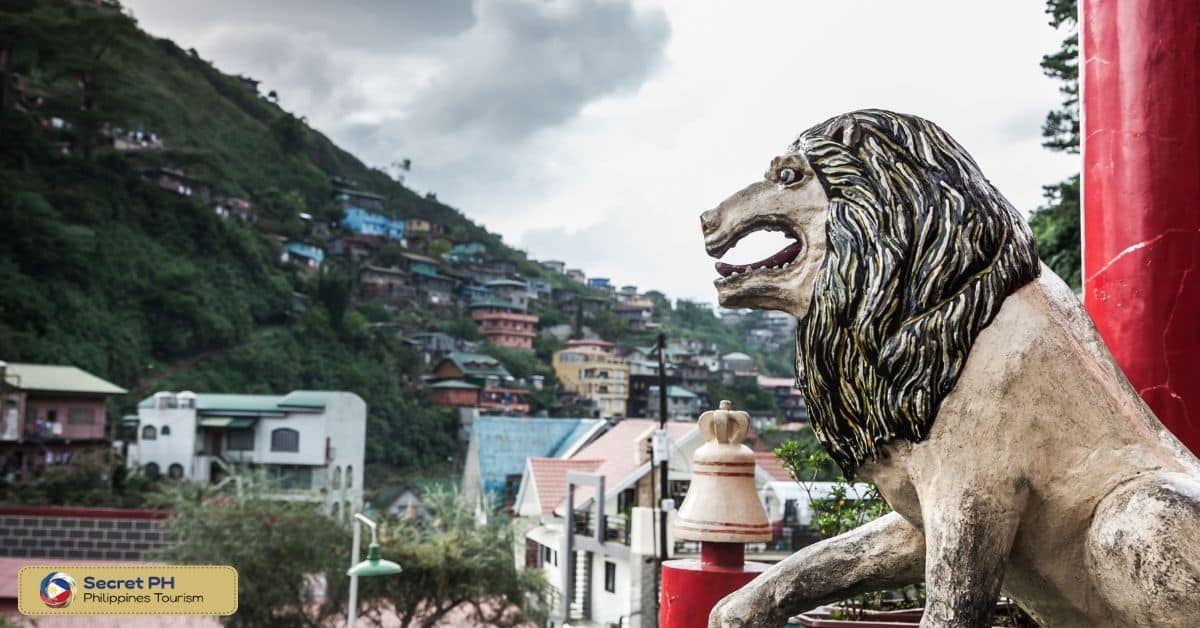
Central Luzon
Central Luzon is located close to Manila and experiences a humid subtropical climate. The region is hot and dry during the summer months, with temperatures ranging from 22°C to 35°C. During the wet season, which usually runs from June to October, rainfall is frequent and can often cause flooding in low-lying areas.
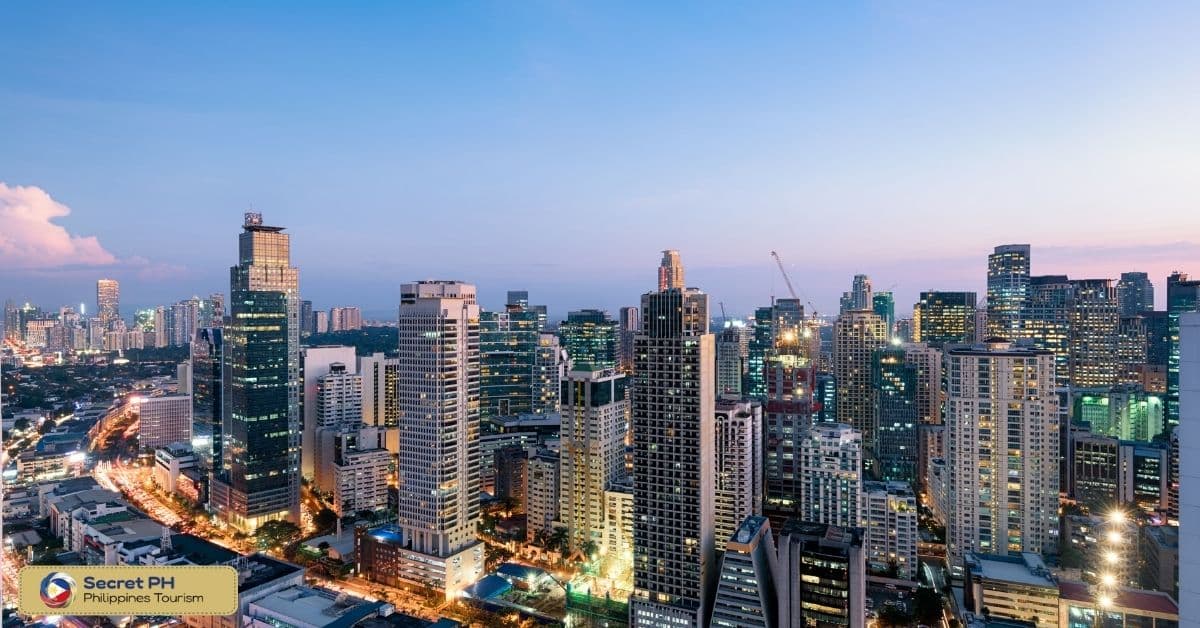
Visayas
The Visayas region consists of several islands, including Cebu, Leyte, and Bohol. The climate here is tropical with temperatures ranging from 23°C to 34°C all year round. Rainfall varies across the region, with eastern and southern parts experiencing higher levels of precipitation than western areas.

Mindanao
The southern island of Mindanao is known for its hot and humid climate. Temperatures in the region typically range from 25°C to 34°C but can reach up to 38°C in some areas during the summer months. Mindanao experiences heavy rainfall throughout the year, with typhoons occurring more frequently than in other parts of the country.
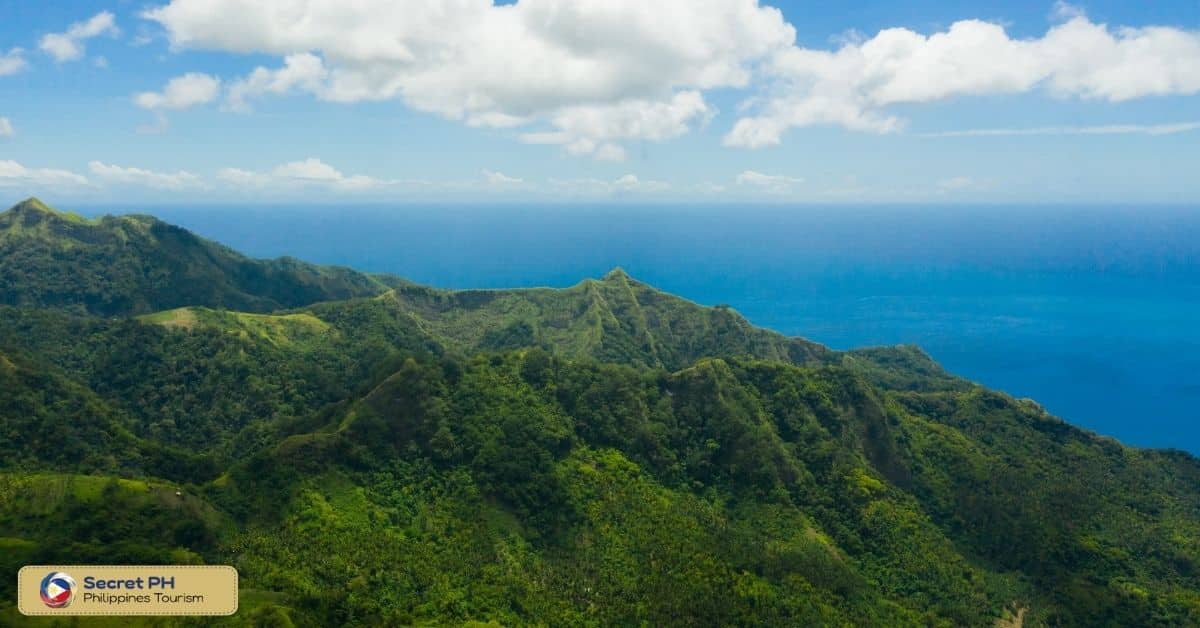
Best Time to Visit the Philippines
The Philippines, known for its tropical climate, beautiful beaches, and friendly people, attracts tourists from around the world. With more than 7,000 islands, the country offers a diverse range of attractions, making it a popular destination year-round. However, understanding the best time to visit can help you avoid crowds, save money, and make the most of your trip.
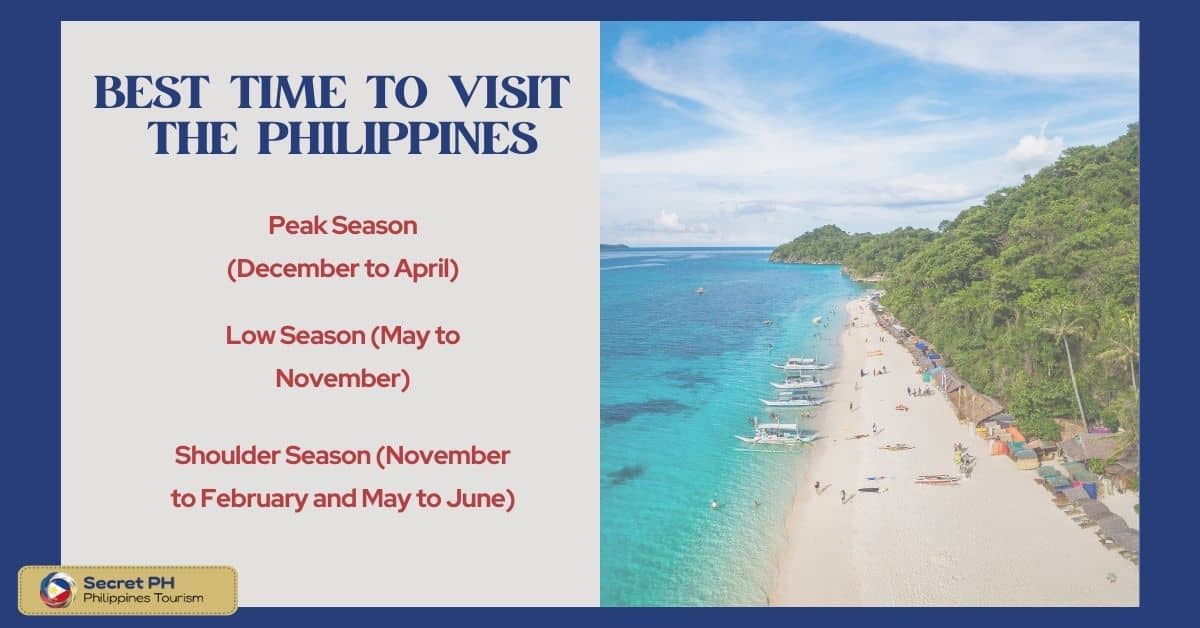
Peak Season (December to April)
The peak season in the Philippines runs from December to April when the weather is dry and temperatures are mild. This is the best time to visit if you want to enjoy outdoor activities such as island hopping, snorkeling, and surfing.
Low Season (May to November)
The low season in the Philippines is from May to November when the country experiences heavy rainfall and occasional typhoons. Despite the wet weather, this can be an ideal time to visit if you’re looking for lower prices, fewer crowds, and a more relaxed atmosphere.
Shoulder Season (November to February and May to June)
The shoulder seasons in the Philippines, from November to February and May to June, offer a mix of both dry and wet weather. This can be an excellent time to visit if you’re looking to avoid peak-season crowds but still want to enjoy the outdoors.
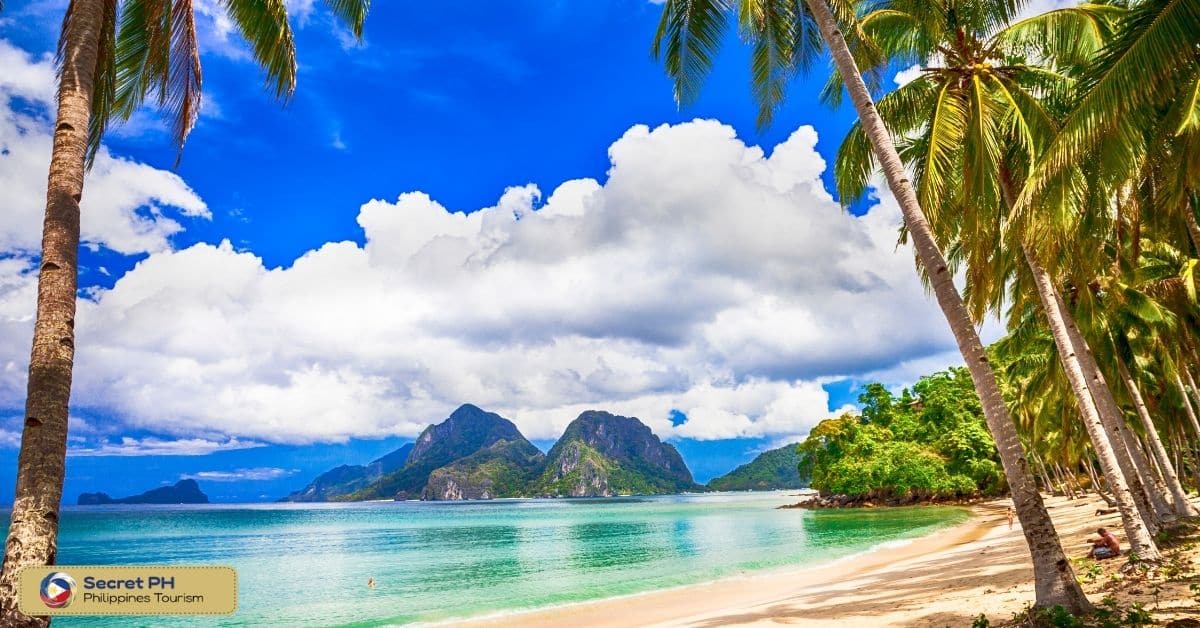
Preparing for Your Trip
Preparing for a trip to the Philippines can be both exciting and overwhelming. With thousands of islands to explore, diverse cultures to experience, and delicious food to try, there’s a lot to consider before you depart. Here are some essential tips to help you prepare for your trip to the Philippines.
Get Your Documents in Order: Before traveling to the Philippines, ensure that you have all the necessary documents in order, including your passport, visa (if required), and travel insurance.
Learn Some Basic Phrases in Filipino: The national language in the Philippines is Filipino, so learning some basic phrases can be helpful. English is also widely spoken, especially in tourist areas, but knowing a few words in Filipino can make your trip more enjoyable.
Pack for the Weather: The Philippines has a tropical climate, so pack light, breathable clothing suitable for hot and humid weather. Bring comfortable footwear, a hat, sunglasses, and sunscreen.
Research Your Destinations: The Philippines has numerous tourist destinations, each with its own unique attractions and activities. Research the places you want to visit to make the most of your trip.
Money Matters: The official currency in the Philippines is the Philippine peso (PHP). ATMs are widely available, but it’s a good idea to carry some cash, especially when traveling to rural areas.
Stay Safe and Healthy: The Philippines is a relatively safe country, but like any other place, it’s important to take precautions. Stay aware of your surroundings and avoid carrying large amounts of cash or valuables. Also, make sure you have up-to-date vaccinations and bring any necessary medications.

In conclusion
The Philippines is a beautiful country with a diverse range of climates. From hot and humid in Mindanao to cool and dry in Northern Luzon, there are many regional variations throughout the country. To make the most of your trip, it’s important to research your destination ahead of time to understand its climate and prepare for any weather-related surprises.
With the right planning and preparation, you can have a memorable and enjoyable experience in the Philippines. No matter when you visit, you’re sure to find something new and exciting around every corner.

